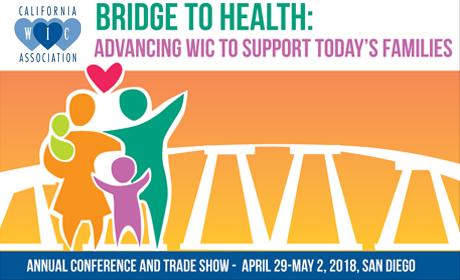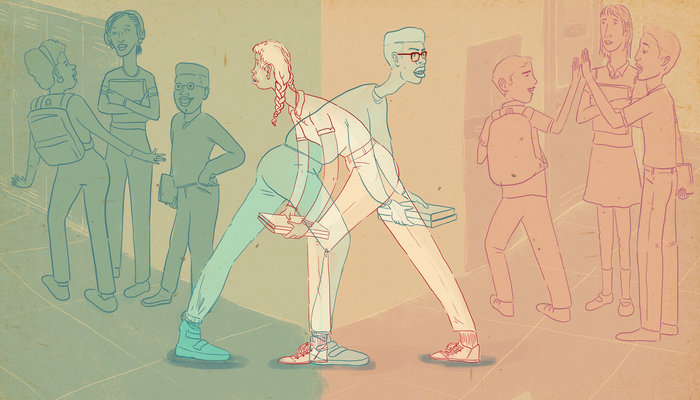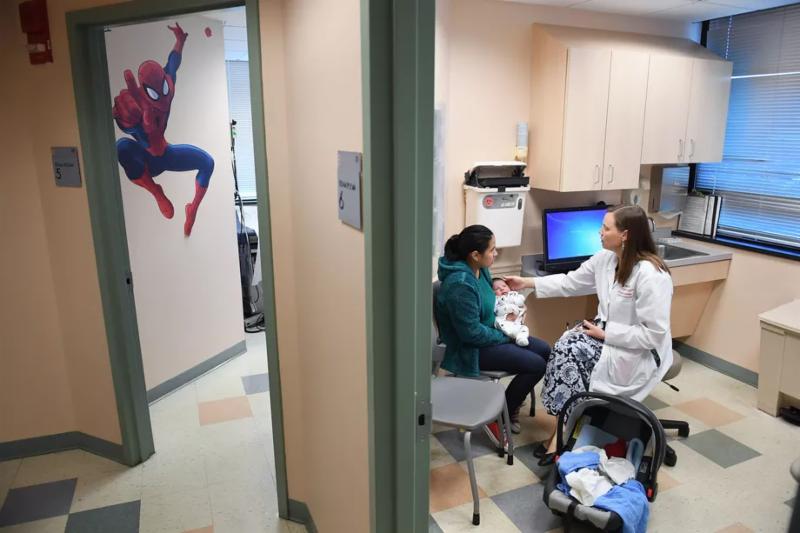|
Unemployment Assistance
Being unemployed is never easy, and it's even harder when winter brings higher utility bills and holiday expenses. Use our
WIC Can Help
page to refer families to unemployment resources, including family leave assistance.
|

Riding Out the Flu Season
Know a lot of people who are sick, possibly with the flu? The number of cases is up this year and hitting the elderly and children hardest. Check these recommendations from the CDC. Wondering if you should get a flu shot? Here are some things to consider.
|
Shopping at Amazon?
Support CWA without spending anything extra by using
AmazonSmile!
|
Did someone share this with you? Sign up here to get the CWA Flash directly!
|
|
|

State Budget Blueprint
Last week Governor Brown released his
2018-19 budget blueprint
. The budget projects continued increased revenue which is largely directed toward the Rainy Day Fund, the budget reserve, and full funding for K-12 education. While the budget notes that poverty continues to be a problem for many Californians, it does little to either reduce the incidence of poverty or expand access to affordable housing. The budget does include some new ideas including a
CalWORKs Home Visiting program
, a pilot program to move traffic tickets to civil adjudication, and funding to promote participation in the upcoming census. The Governor's budget proposal does continue ACA implementation, which has reduced the number of uninsured in CA by half, resulting in nearly 13.5 million people covered through Medi-Cal and 1.3 million people covered through Covered California. However, the Governor takes a "baseline" approach to the health budget, partly due to federal threats to repeal the ACA.
|

Shutdown Threat Looms Large
With another short term funding CR running out this Friday, Congress is faced with a complex set of negotiations for FY 2018, and another threat of a government shutdown. Compared to other votes, such as on taxes, spending decisions need more bi-partisan support, with 60 votes needed in the Senate, where the Republicans have 51 seats. The issues on the table make this round of negotiations exceptionally complex, with the budget, immigration, health care, and disaster relief all in play. Budget issues include challenges with budget caps, going back to the Budget Control Act, and limits on defense and domestic spending, which includes WIC. In the push to increase budget caps, Democrats will defend non-defense spending against the push to add billions to defense spending. The DACA program is running out of time. Budget negotiations attach DACA to funding for the border wall. Taking immigration out of this week's negotiations, complicated even more by the President's racist remarks, is an option. Funding for the Children's Health Insurance Program (CHIP), is expired, and despite some states being provided extra money to fill gaps, children's health insurance is at risk with 1.9 million children potentially losing coverage this month and another million in February. Disaster relief funding has fallen short for states and territories hit by hurricanes and wildfires, and is caught up in the larger funding issues.
|

Annual Conference Program Coming Together!
The local WIC agency staff helping CWA plan our Annual Conference & Trade Show have been hard at work these last few months to bring you engaging speakers on relevant topics to help you build a Bridge to Health: Advancing WIC to Support Families. Check out the latest draft agenda showing the variety and depth of workshop choices! Insightful plenary speakers, renewing wellness activities, an eWIC scavenger hunt, a full trade show, and oodles of networking opportunities will make this year's conference as rewarding as ever. Join us in San Diego April 29-May 2. Don't miss it! ACTION: Find the agenda and information about registration, hotel, special events, and sponsors on our Conference website. Register by February 23 for early bird rates!
|

WIC Food Package Reduces Severe Child Obesity?
Using data on nearly 23 million children enrolled in the WIC program from 2000-2014, researchers identified declines in the incidence of severe obesity, defined as a child being heavier than 99% of peers. After several years of increases, from 2004 to 2010, severe obesity rates decreased for boys, younger children, black and Asian children. From 2010 to 2014 there were declines for all demographic groups with the largest relative declines for two-year-olds and for Hispanic, Native American and Asian children. It is postulated that the 2009 change in the food package, reducing juice, adding fruits and vegetables, whole grains and other improvements, could be contributing to the reductions.
|

American Schools "Profoundly Unequal"
Following an investigation into how America's schools are funded, recommendations released by the U.S. Commission on Civil Rights say that "American public schooling is, and has been, profoundly unequal in the opportunity delivered to students, the dollars spent to educate students, and the determinations of which students are educated together." The report, titled "Public Education Funding Inequity: In An Era Of Increasing Concentration Of Poverty and Resegregation," notes many ways America's education system fails vulnerable students - beginning with neighborhood schools that remain deeply segregated and continuing into classrooms where too many students lack access to skilled teachers, rigorous courses and equitable school funding. Recommendations include incentivizing states to adopt equitable public school finance systems, increasing federal funding to supplement state funding with a goal to provide meaningful educational opportunity on an equitable basis, and promoting the collection, monitoring, and evaluation of school spending data.
|

Poor Diet, More Aggressive Immune System
The immune system
responds to a "western diet"
the same way that it responds to a bacterial infection, according to a recent study. Furthermore, unhealthy food seems to make the body's defenses more aggressive in the long term, which may contribute to the development of "lifestyle diseases" like arteriosclerosis and diabetes. Researchers say that the findings offer yet another important reason why forming good nutrition habits in children is critical. Switching to a healthier diet is never a bad idea, but the genetic changes to the immune system caused by a poor diet may cause long-term problems.
|

Less Sleep, Higher BMI with Kids' Device Use
According to researchers at Penn State College of Medicine, using digital devices before bed may cause sleep and nutrition problems for children. A survey of parents, with children ages 8-18, about their childrens' bedtime habits revealed that children who use devices before bed slept less, didn't sleep as well, were more tired in the morning, and had a higher BMI. Researchers were particularly interested in younger children, as there is less data on that population, yet 40 percent of children have cell phones by fifth grade.
|

US Child Mortality the Worst
A recent study comparing 20 wealthy, democratic countries found that, since the 1960's, child mortality has declined in all of them. For the US though, since the 1990's, the comparative rates of child mortality are the worst, especially for infants and teenagers. Some potential causes include lack of health insurance, especially for pregnant women and resulting poor birth outcomes, the rise in child poverty and gun violence.
|

Maternal Mental Health Brief for Public Health Nutritionists
The Association of State Public Health Nutritionists has released a brief titled "Supporting Maternal Mental Health in Public Nutrition Practice." There is overwhelming evidence of the importance of good mental health for mothers and their families, but less guidance on how to best identify and support vulnerable mothers. This document will provide public health nutritionists with basic information on maternal depression and guidance for practical first-steps to address maternal mental health. The brief identifies breastfeeding as a protective factor, and highlights the Baby-Friendly Hospital Initiative and WIC program.
|
Guidance on Informal Milk Sharing
In response to the increasing informal sharing of human milk, the Academy of Breastfeeding Medicine (ABM) has
published guidelines
to minimize the risk of this practice while enhancing the health benefits. The position statement is published in Breastfeeding Medicine, and is available free on the
BreastfeedingMedicine
website until February 8, 2018.
|
Safe Sleep Practices Report
The Centers for Disease Control and Prevention have released a Vital Signs report entitled "
Trends and Disparities in Infant Safe Sleep Practices - United States, 2009-2015
." The 2009-2015 Pregnancy Risk Assessment Monitoring System (PRAMS) data, was used to describe infant sleep practices. Using 2015 data the researchers studied nonsupine sleep positioning, bed sharing, and soft bedding use by state and selected maternal characteristics, as well as linear trends in nonsupine sleep positioning from 2009 to 2015. Visit the
Vital Signs web page
to find the Morbidity and Mortality Weekly Report (MMWR), shareable infographic, and other materials.
|
|
|